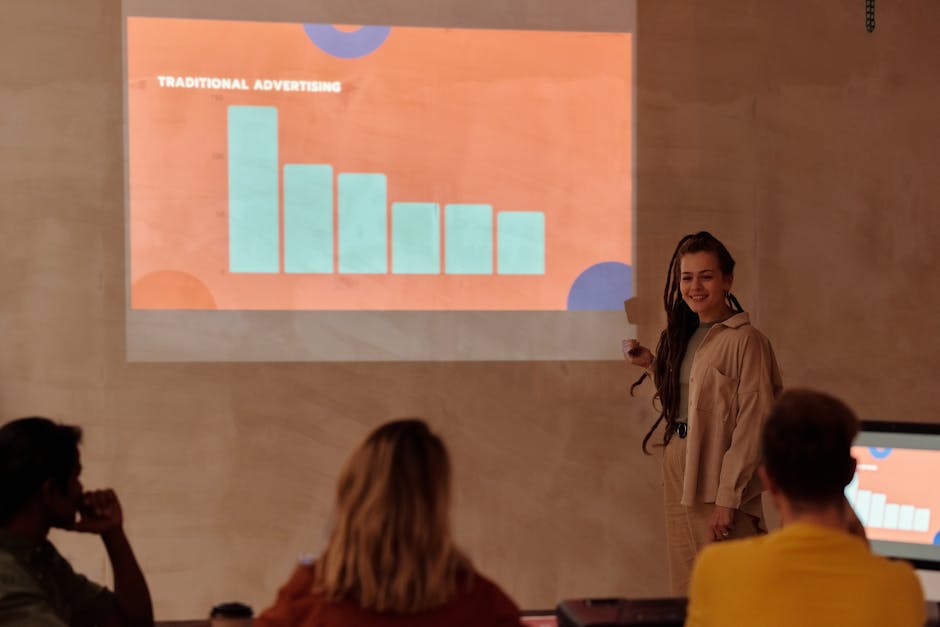Getting your own email list for marketing, it’s something a lot of businesses, both big ones and the smaller, scrappier outfits, still talk about a bunch as we head into 2025. You see, with all the hoopla around social media algorithms doing their own unpredictable dance, and paid ads getting more pricey all the time, having a direct line to people who actually care about what you do, well, that’s just super important. It’s like, a good solid foundation for your whole marketing thing.
People, they keep saying email is old news, right? But seriously, that’s not really how it works out. Email, it has this staying power, you know? It’s not some flashy, new thing, sure, but it’s consistent, and it can be counted on. That’s a real big deal for staying connected with your customers and the potential ones too.
It is really important for businesses to sort of own their connections. Relying too much on those big tech companies and their changing rules can be kind of risky. Building your list of emails is, in a way, like building your own little communications network. It gives you a lot more control, which is something you truly want to have.
This whole process of getting people to give you their email address, it isn’t always super straightforward. There are good ways and, let’s just say, less good ways to go about it. We’re going to talk about the good ones, the ones that actually make sense and people like.
You want to make sure the people on your list are genuinely interested, not just folks who signed up by accident. That’s what makes for a good list, a usable one, one that helps you send out your messages without feeling like you’re just yelling into a void or something.
We’re going to get into how you can actually get these lists together. It’s not just about slapping a sign-up form on your website. There’s a bit more to it than that, a bit of thinking involved, and some honest work to do. It’s a process, normally, not an overnight thing.
Why Bother with Email Lists These Days, Anyway?
So, why would anyone still put a lot of effort into getting an email list, especially now in 2025 when there’s so much other stuff going on? Well, the simple truth is that email still works. It’s a direct connection you have, which is pretty special when you think about it.
Social media, it’s great for discovery, for getting seen, for being out there. But when you post something on one of those platforms, only a small percentage of your followers actually get to see it. It’s not like sending an email where, generally, it lands in an inbox.
And ads, oh boy, ads can be super expensive, can’t they? You pay a lot to reach people, and then when your budget runs out, so does your reach. An email list, on the other hand, is like your own broadcast channel, always there, ready to go.
It’s also about building relationships with people. When someone gives you their email, it’s a sign of trust. They’re saying, “Yeah, I’m kind of interested in what you have to say or sell.” That’s a big deal, and it’s something you really want to nurture.
Having this list gives you a place to talk directly to your audience about new things, special deals, or just to share interesting stuff. It’s considered to be a much more personal space compared to a general social media feed. People often check their emails regularly.
It’s also about control, really. You own this list. Nobody can take it away from you, or change the rules on how you contact these people. That security, that sort of directness, it makes email lists pretty powerful for any kind of marketing push.
Making People Want to Sign Up (The Good Stuff)
Alright, so how do you actually get people to want to give you their email address? You can’t just ask nicely, normally, and expect a flood of sign-ups. You need to offer them something good, something that makes them feel like it’s worth it. That’s the main idea.
Think about what your potential customers might find useful. Maybe it’s a small guide, a checklist, a template, or access to an exclusive video. People call these things “lead magnets” sometimes, but it’s just something cool they get for free.
Whatever you offer, it needs to be related to what you do, naturally. If you sell coffee, maybe it’s a guide to making the perfect pour-over. If you offer web design, perhaps it’s a little rundown of common website mistakes. It has to make sense.
Make sure your offer is really, truly clear. People shouldn’t have to guess what they’re getting. Use simple words to describe it, and tell them exactly how it’s going to help them out. That helps a lot, you know, with getting folks to sign up.
You can also offer things like early access to new products or services. Or maybe a discount code that’s just for email subscribers. People love a good deal, generally speaking, and they also like feeling like they’re part of an exclusive club.
Sometimes, just really good content on your blog or website is enough. If people consistently like what you’re putting out there, they’ll often sign up for your newsletter just to make sure they don’t miss anything. That’s a natural way to do it.
Don’t forget the power of free trials or demos if you’re selling software or a service. Asking for an email to access a trial is a very common and accepted practice. It’s about letting them try before they, you know, commit fully.
Where Do Folks Actually Find Your Sign-Up Form?
Okay, you’ve got your awesome offer ready. Now, where do you put the sign-up form so people can actually, you know, find it? It’s kind of like putting up a sign for a lemonade stand; it needs to be somewhere visible and logical.
The most obvious place is your website. Put a sign-up form on your homepage, maybe in the sidebar, or at the bottom of blog posts. You can also have a dedicated “subscribe” page that you link to from everywhere else. That’s a pretty standard approach.
Consider using a pop-up form, but be careful with these. They can be really effective, but if they’re too annoying, people will just close them and leave your site. Make them timed, or only show up when someone is about to exit the page.
Social media is another big place. Don’t just announce your offer once. Keep talking about it. Share direct links to your sign-up page in your posts, your stories, or your bio. You have to keep reminding people it’s an option.
If you’re doing any online advertising, you can send people directly to a “landing page” where the only option is to sign up for your email list to get the special thing you’re offering. This is super focused and can work well.
Sometimes, in real-life events like trade shows or local markets, you can have a physical sign-up sheet or a tablet. People still do that! Just make sure you get their permission clearly, obviously, and then type those emails in later.
Even in your email signature, you can put a little link that says, “Hey, want more tips? Sign up for my newsletter!” It’s a small thing, but it adds up. Every little spot where someone might see it counts for getting your list bigger.
Keeping Your List Healthy and Happy
Getting people on your email list is just the first step, truthfully. You’ve got to keep those folks happy and engaged, otherwise, they’ll just unsubscribe, and all your hard work will have been for nothing. It’s about keeping them interested.
First thing, send emails regularly, but don’t overdo it. Figure out a schedule that makes sense for your audience. Is it once a week? Twice a month? Too many emails, and people get annoyed. Too few, and they forget who you are. Find that nice balance.
The stuff you send them needs to be good. Keep delivering on the promise you made when they signed up. If they signed up for tips, send them tips. If it was for deals, send them deals. Don’t just bait and switch them, you know?
Personalize your emails a bit. Use their name if you have it. That makes it feel more like a conversation, less like a mass broadcast. It shows you care a little bit about them, and that’s generally a positive thing for relationships.
Also, think about segmenting your list. That’s a fancy way of saying, dividing your list into smaller groups based on what they’re interested in, or how they signed up. Then you can send really specific emails to those specific groups.
For example, if some people signed up for a beginner’s guide and others for an advanced one, they probably need different information. Sending them what they actually want to see is just good sense and helps keep them around.
Clean your list every so often, too. Remove people who never open your emails. It might seem counter-intuitive to remove subscribers, but a smaller, engaged list is much better than a huge, uninterested one. Your deliverability rates will generally be better.
What to Do Once You Get Them on Your List
So, you’ve gone through all that trouble and you’ve got a growing list of people. Now what? The whole point is to actually use it, right? You need a plan for what to send and when to send it. This part, it is really about staying connected.
Typically, you’ll want to have some kind of welcome sequence ready for new subscribers. This is a series of maybe 2-3 emails that automatically go out when someone first signs up. It introduces your brand, reminds them what they get, and sets expectations.
After that, you’ll generally move into your regular newsletter schedule. This is where you share new content, product updates, behind-the-scenes stuff, or anything that keeps your audience thinking about you and your business. It’s about staying top-of-mind.
Don’t be afraid to ask for feedback, either. Ask your subscribers what they want to hear more about, or what kind of problems they need help with. This makes them feel involved and helps you create content that they will actually, truly enjoy reading.
Sometimes, you can even send out surveys. People generally like to share their opinions, and it gives you really good information. You can use that information to improve your products, your content, and just about everything else, really.
Remember, the goal isn’t just to send emails, it’s to build a sort of community and to help your business grow. So make sure your emails are always providing some sort of good thing for the person reading it. That’s the secret sauce, generally.
Sending emails is a skill, sort of, that you get better at over time. You’ll learn what subject lines get opened, what kind of messages get responses, and what just doesn’t work for your particular audience. It’s a bit of a learning journey.
Getting an email list, it’s not a one-and-done kind of thing. It takes constant attention and a bit of care. But, doing it right, getting people to actually want to hear from you, that’s something that will help your business grow and be stable for a long time. It gives you a direct line to your biggest fans, and that is absolutely worth the effort.
—
Frequently Asked Questions (FAQs) about Getting an Email List
1. How fast can I actually build a good email list?
Well, honestly, it kind of depends. It’s not usually a super-fast process if you want a good list of genuinely interested people. Some businesses see quick growth with a really strong offer, but normally it takes a steady, consistent effort over weeks or months to see real results. Quality is more important than just numbers.
2. What should I offer people so they give me their email?
You want to offer something that really helps them or gives them some kind of immediate good thing. Things like free guides, checklists, templates, discount codes, or maybe exclusive access to a video series work well. It just has to be something related to what your business does, naturally.
3. Is it okay to buy an email list?
No, definitely not. Buying email lists is really not a good idea. The people on those lists haven’t given you permission to email them, so your messages will generally go straight to spam. Plus, it can actually hurt your sender reputation, making it harder for your legitimate emails to get through in the future.
4. How often should I send emails to my list?
That’s another thing that varies, generally speaking. Some businesses send daily, others weekly, or even just once a month. The best way is to test it out and see what your audience prefers. Start with once a week, maybe, and adjust from there based on how people respond and what your business has to say.
5. What if people don’t open my emails or unsubscribe?
It’s totally normal for some people not to open emails, or to unsubscribe. Don’t take it personally. Focus on sending really good content, making your subject lines appealing, and segmenting your list so people get relevant stuff. Regularly cleaning out inactive subscribers can actually help your overall email performance, too.










